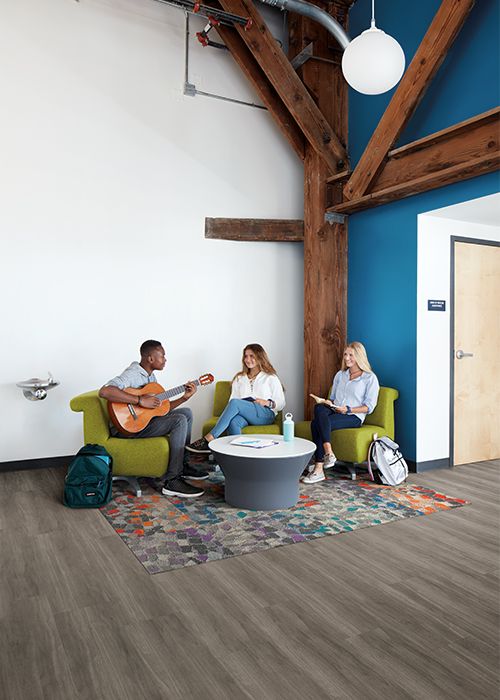Schools today have to do it all. They need to be high-performance facilities that educate, inspire and enhance student success. They also need to be innovative, flexible and survive daily wear and tear.
So where do you start when it comes to comes to facility improvements? What are your quick wins?
The problem with traditional school design
According to a study, a school’s physical design can improve or worsen academic performance by as much as 25%. Some of the biggest factors affecting student well-being? Acoustics, lighting, and visual comfort.1
The design of our school buildings hasn’t always kept pace with research on how students learn best. Many schools have been built with the same formula: classrooms lined up next to each other and a hallway to connect them. Each space has a single purpose. It’s an evolution of the one-room schoolhouse from the 19th century, and it’s remained largely unchanged in all that time.2
But the 21st century calls for something different.
There’s no longer a one-size-fits-all approach to learning, and schools need to reflect the different needs of its students and teachers. If flexibility is critical to classroom design, it’s also necessary to other school spaces too. A prime opportunity for adaptable space? Hallways and corridors.
School corridors as learning space
Corridors take up 25-30% of a school’s total square footage. If hallways are only used as thoroughfares from one classroom to another, that’s a lot of wasted space — space that could be put to better use for learning.
And when starting from scratch with a shiny new building is not an option, adaptive reuse is a viable solution. Trends show that many K-12 schools are reallocating square footage away from hallways and lockers to free up more collaborative space. This approach is different than the experimental open plan designs of the 1960s and 70s — it’s taking space that already exists and repurposing it for more productive uses. Innovative school facilities designate collaboration areas through flooring. They take advantage of natural light and the outdoors. They open up high-traffic areas as spaces that encourage socialization between students, faculty, and staff.

Create collaboration zones in open spaces and corridors through flooring. Product shown: Studio Set, Stone Course
Architecture firm Perkins Eastman conducted research that backs up this assertion. Their study showed that 76% of faculty and students said large group gathering spaces are successful at supporting a sense of community.3
The more students feel connected to their environment, the better they perform. By supporting student independence and collaborative learning through flexible space within and outside of the school building, you achieve positive results.
So maybe it’s time to take a look at your hallways and corridors with a different perspective. What do you think?
2 A History of School Design and its Indoor Environmental Standards, 1900 to Today. (2012) [report] Available at: http://www.ncef.org/pubs/greenschoolshistory.pdf [Accessed 4 Apr. 2018].